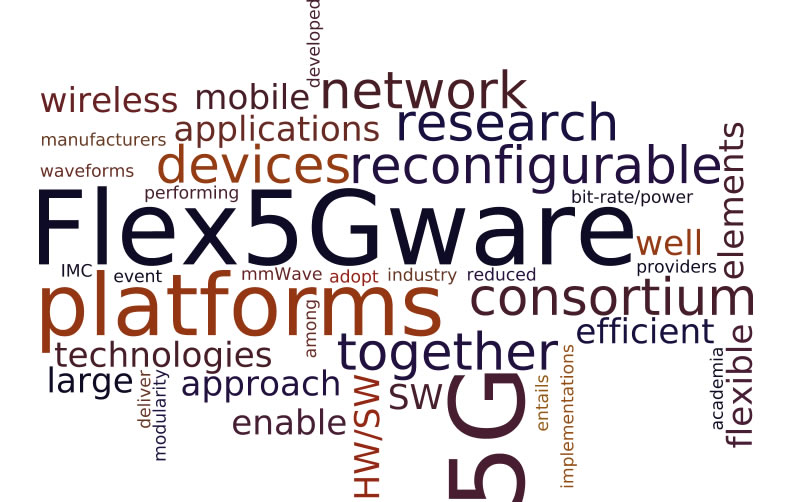
Developing 5G technologies such as new radio wave forms and network architecture concepts is of course vital for building the 5G networks of the future, but ensuring they’re flexible and simple enough to easily implement is important too and that’s where Flex5GWare comes in.
Flex5GWare is a project run by the 5G Public Private Partnership (5G-PPP). It’s a broad coalition of 17 organisations, including Alcatel-Lucent, Ericsson, NEC, Intel and more, spanning infrastructure providers, semiconductor manufacturers, network operators and research and academic institutions.
Flex5GWare aims to help develop an energy efficient, scalable, reconfigurable 5G technology with low latency and high capacity and resilience. To achieve this it envisions 5G networks as using highly reconfigurable hardware platforms and advanced hardware-agnostic software platforms, so they’ll need to be flexible.
“Future networks will require not only new air interface and architecture solutions, but also design characteristics that allow these solutions to be implemented efficiently under widely varying circumstances,” said Michael Färber of Intel Deutschland GmbH, project lead for Flex5Gware.
“The Flex5Gware project will explore new hardware and software building blocks for the flexible, reconfigurable and efficient operation of future communication platforms, which will underpin all 5G mobile services and applications.”
Flex5GWare will research and develop key 5G building blocks to help create efficient hardware and software platforms for 5G networks and devices.
It will explore various technical challenges involving radio frequency (RF), mixed signal technology, baseband digital signal processing (DSP), software implementations of protocol stacks, as well as other key aspects of 5G networks, to help simply their implementation.





